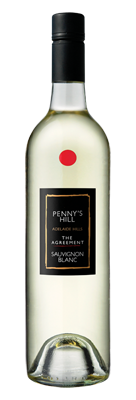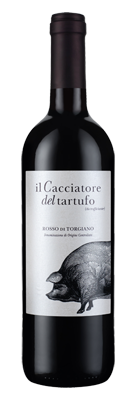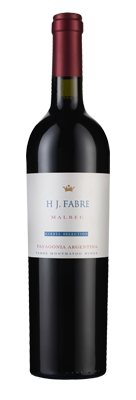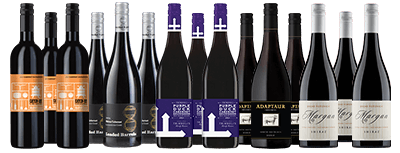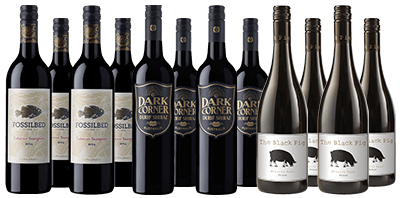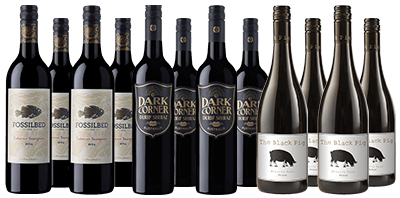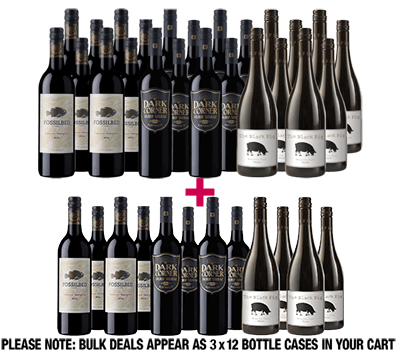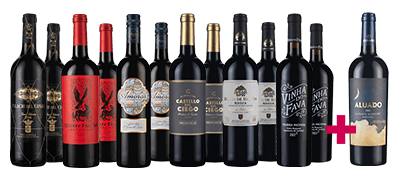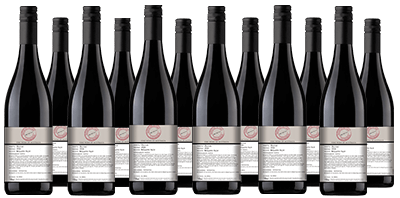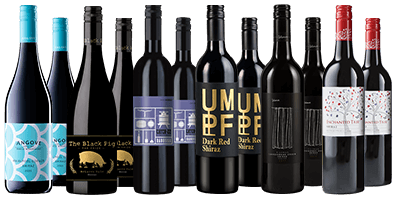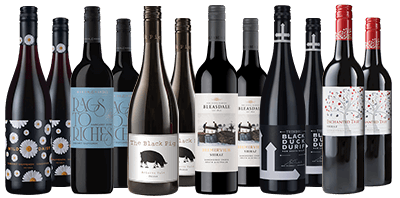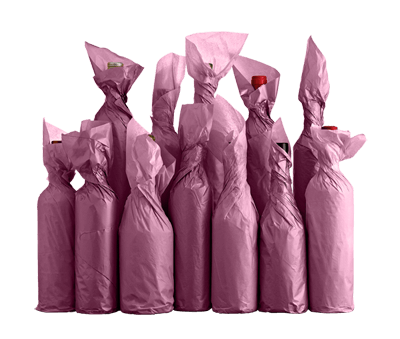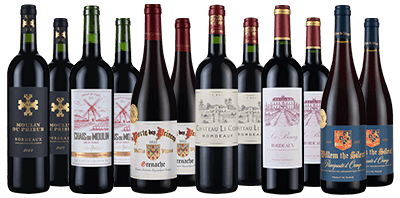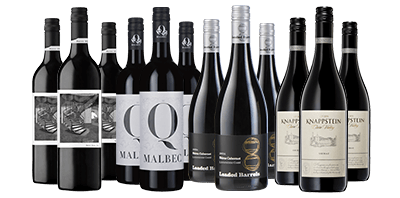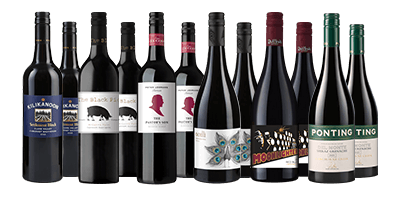Filter by
- $30.00 RRPfrom $21.99 when you mix 12+
- Two Golds, 96, 95 & 92pt iconic GSM from d'Arenberg.$78.00 RRPfrom $74.99 when you mix 12+
- “Magnificently full…”, 97pt iconic flagship! “A textbook Barossa Shiraz...” (The Real Review).$120.00 RRPfrom $112.00 when you mix 12+
- "Superbly composed" (Wine Orbit) 96pt Shiraz – "a freight train of intensity..."(Halliday)$65.00 RRPfrom $62.99 when you mix 12+
- Silky, rich, dense cherry fruit in this sumptuous Sangiovese-blend gem from Umbria's Torgiano.$36.00 RRPfrom $27.99 when you mix 12+
- A gorgeous, ripe blend of Sangiovese, Cabernet and Merlot, with dark, chocolaty, cherry fruit.$36.00 RRPfrom $27.99 when you mix 12+
- For fans of mature Spanish reds, La Cantera hits the mark, with silky red fruit and toasty oak.$28.00 RRPfrom $19.99 when you mix 12+
- Impressively rich, elegant and satin-smooth, a Malbec masterclass from very beautiful Patagonia.$40.00 RRPfrom $32.99 when you mix 12+
- Strawberry scented layers of flavour in this Spanish Monastrell Tempranillo blend$24.00 RRPfrom $18.99 when you mix 12+
- Superb Merlot-rich claret from a great vintage and a consistent Gold-medal-winner.$50.00 RRPfrom $42.00 when you mix 12+
- 91pt, Great Value Langhorne Creek Cab Merlot combo “Remarkable quality at this price” (Halliday).$20.00 RRPfrom $16.99 when you mix 12+
- Stack the rack and stay warm all winter with this15-bottle mix for a tiny $12.99 a bottle (or less)!$194.85$387.00 per case
- $256.00 per case
- $256.00 per case
- 3 top-drop dozens favourites for $9.99 a bottle. Save $408!$359.64 per case
- Spain meets Portugal in this exciting mix. save $102 + FREE Bottle of 7x Gold Aluado worth $26.$197.88$332.00 per case
- A superb McLaren vale Shiraz, lebelled simply and available at $12.99 a bottle.$155.88$300.00 per case
- $143.88$288.00 per case
- $38.00$40.00 per case
- $167.88$284.00 per case
- SAVE a MASSIVE 76% ($684!) on this remarkable 96pt Premium Edition ‘secret’ Cabernet Dozen.$215.88$900.00 per case
- Aussie winter getting you down? Take your tastebuds to France with these luscious reds!$197.88$328.00 per case
- Impress your guests and delight your friends with these wonderful wines at $14.99 a bottle!$179.88$330.00 per case
- Flavour-packed beauties made for our customers alone. Buy 12 and save $140.$191.88$332.00 per case
How is red wine made?
Just like with any wine, creating red wine kicks off with the harvesting of red wine grapes (which also includes purple or black-coloured grapes). The grapes are crushed to release the juice, and yeast and sugar are added. Left to ferment, the natural sugars in the juice turn to alcohol.
Red wine, however, gets its distinctive colour from the grape skins that are left to soak in the juice either before or during fermentation. The process – known as maceration – lasts anywhere from a few days to a few months, with longer soak times yielding a darker hue and more pronounced flavours. The grape skins and seeds, if used, also add to the wine’s tannic structure and taste.
Once fermentation is complete, the wine is typically aged further in an oak barrel or bottle.
The choice of grape and where it is grown play a vital role in the final taste and personality of red wine.
What are the types and styles of red wine?
There are many different types of red wine, each with its own flavour profile, ageing potential and texture. Some of the most popular red wines include:
- Shiraz: Presents a rich and bold character with complex layers of dark fruit flavours and peppery undertones.
- Cabernet Sauvignon: Known for its bold flavours, high tannins, and ageing potential, Cabernet Sauvignon is a favourite among red wine connoisseurs.
- Malbec: Malbec is a full-bodied wine with intense dark fruit flavours and a smooth finish.
- Merlot: Offers a smooth and velvety texture with approachable flavours and versatility in food pairings.
- Pinot Noir: Celebrated for its elegance, light to medium body, and nuanced flavours, Pinot Noir is a versatile choice that complements a wide range of dishes.
- Tempranillo: The main grape in Rioja wines, Tempranillo offers flavours of red berries, spice, and a smooth, medium-bodied profile.
- Sangiovese: The primary grape behind Chianti, Sangiovese exhibits bright acidity, red cherry flavours, and notes of herbs and earth.
- Grenache: Known for its plush and medium-bodied profile, Grenache wines burst with bright red fruit and citrus aromas.
What is dry red wine?
Red wine is called ‘dry’ when there’s hardly any residual sugar left after the fermentation process. During fermentation, the natural sugar in the grape juice is turned into alcohol. The longer the wine ferments, the more alcohol is created, leaving less residual sugar in the wine – hence the name.
So, dry red wines aren’t as sweet as other wines you might have tried. Plus, they generally have more alcohol – about 13.5 to 15% ABV – which gives them a stronger flavour and a more noticeable feel in the mouth.
Popular dry red wines include Tempranillo, Merlot and Cabernet Sauvignon.
What is sweet red wine?
Red wine gets the ‘sweet’ tag when there’s more residual sugar left even after the grape juice has done its time fermenting. That’s no accident – the leftover natural sugar gives these wines their characteristic sweet touch.
With a shorter fermentation, less sugar is converted into alcohol. That’s why sweet red wines usually pack less of a punch – they’re often under 10% ABV.
What are red wine blends?
Red wine blends are wines created by mixing different types of red grapes or wines, offering a unique combination bursting with flavours. The winemaker’s skill is key here, as they mix various grape varieties in precise ratios, guiding the flavour, body, and overall profile, creating a balanced, harmonious wine. They can blend the grapes at any point during the winemaking process, and the ratio of grape varieties can vary, as each winery has its own unique signature blend.
Examples include the world-famous Bordeaux blend, comprising Cabernet Sauvignon, Merlot, Cabernet Franc – and GSM, a mix of Grenache, Shiraz, and Mourvèdre. Blending enables winemakers to showcase their creativity, creating distinctive offerings beyond the scope of traditional, single-variety wines.
What is the smoothest red wine?
Grape varieties such as Pinot Noir, Merlot and Grenache are typically low in tannin and, therefore, are regarded as smooth. Although ‘smoothness’ can vary depending on the winemaking process and where the wine is produced.
Pinot Noir is typically considered to be one of the smoothest red wines. It’s known for its velvety texture, silky feel, and low tannins. Light-bodied, its delicate yet complex flavours of red fruits, earthy undertones and subtle spice glide across the palate.
Merlot is another wine hailed as smooth thanks to its velvety texture, soft tannins and rich fruit flavours like plums, cherries and blueberries. This makes Merlot smooth and easy to drink, especially for those new to red wine or those who prefer a gentler, softer wine.
With low tannins, Grenache wines can range from light to medium-bodied, with a smooth and silky mouthfeel.
How should I serve red wine?
When serving red wine, there are a few things you should consider to get the best from your wine.
- Temperature: Red wine is best served slightly below room temperature to keep its flavours and aromas. Lighter red wines such as Pinot Noir and Beaujolais benefit from cooler temperatures, typically around 12-15°C, while fuller-bodied reds such as Cabernet Sauvignon and Shiraz can be served slightly warmer, around 15-18°C.
- Decanting: Some red wines, particularly those with high tannins or that have been aged, can benefit from decanting. Decant wine by pouring it into a decanter or carafe, giving it time to ‘breathe’. This contact with oxygen in the air helps to soften harsh tannins. Robust and tannic wines such as Cabernet Sauvignon and Bordeaux can benefit from two or three hours of decanting. Medium-bodied wines such as Merlot and Chianti require one or two hours to breathe, while lighter and older wines may only need around 30 minutes.
- Glassware: Choose red wine glasses with large bowls and wide rims to let the wine breathe and concentrate the aromas. The larger surface area of the bowl allows for more interaction with oxygen, enhancing the flavours and aromas of the wine.
- Food pairing: Red wine pairs well with a wide range of foods. Lighter reds like Pinot Noir can be paired with poultry, fish, or vegetarian dishes, while fuller-bodied reds like Cabernet Sauvignon and Merlot pair well with beef, lamb, or strong cheese. Experimenting with different food and wine combinations can unveil exciting flavour harmonies.
- Serving size: A standard serving of red wine is around 150 ml, but feel free to adjust based on personal preference.
How should I store red wine?
Store red wine correctly if you want to maintain its aromas and flavours. Red wines can quickly spoil when cellared in direct sunlight. Here are some things you can do to make sure your wine tastes delicious:
- Temperature: Store red wine in a cool, dry environment with a consistent temperature (around 12-18°C). Avoid storing red wine in areas prone to temperature fluctuations, such as near heaters or windows, as this can affect its taste and ageing potential.
- Humidity: The storage area should have a moderate humidity of around 70% to keep the cork moist. If the humidity is too low, you could consider using a humidifier or placing a bowl of water nearby to increase the moisture in the air.
- Avoid light: Direct sunlight or harsh artificial light can affect the quality of red wine. Store red wine bottles in a dark place or use wine storage that provides UV protection to shield the wine from light.
- Store sideways: Store red wine bottles on their side, as it keeps the cork in contact with the wine. This prevents the cork from drying out and allowing air to enter the bottle.
- Odour-free environment: Red wine can absorb strong odours, especially when opened. This can taint the wine’s aroma and flavour, so it’s best to store them away from other produce.
- Keep it still: Avoid moving wine too often and keep away from vibrations, as this can speed up chemical reactions and spoil the wine.
If you plan to store red wine for a long time, you could consider investing in a wine fridge.
How long does red wine last after opening?
Once opened, red wine typically keeps its flavour for three to five days if kept in a cool, dark place. Replace the cork or use a wine stopper to prevent oxygen from getting into the bottle. Wines with screw caps should be sealed securely to maintain their flavour.
Remember, the flavour of red wine may gradually change over time, so it’s best to drink it within a couple of days.





